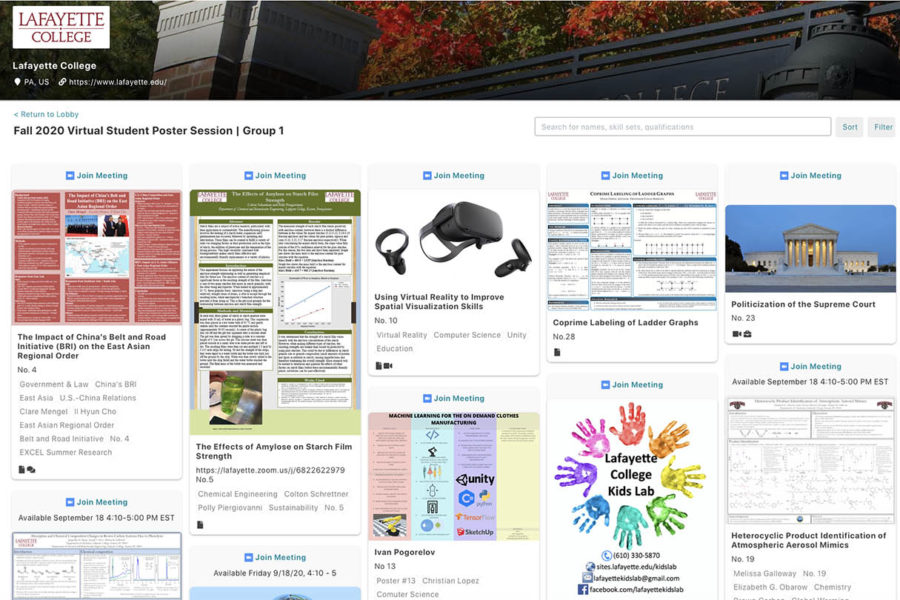As we have emerged from the pandemic, everyone is seeking to have their life return to pre-pandemic normalcy. One of the biggest yearnings we hear is the desire to return to in-person experiences or events, whether they are sit-down restaurants or conferences. We are all thinking about and trying to re-establish in-person social interactions while being mindful of each other’s different comfort zones with social distancing.
Some event organizers feel so much pressure to return to the pre-pandemic status-quo that we have seen some events return with only an In-person option. We all value face-to-face human connectivity and the warm effect of spontaneous human connectivity without technology. However, one significant and undeniable outcome of the last few years is that many technologies have emerged that make it easier and more convenient for us to connect, communicate and collaborate, remotely.
Although there has been a wide range of experiences with online events and conferences over the last few years, one thing remains sticky; video calls are continuing to play a prominent role in human communication because of their convenience, time savings and, accordingly monetary savings. This basic functionality is now intertwined and embedded in our interactions to a greater or lesser extent depending on your employer or type of job. Many employers of white-collar businesses are experiencing pushback as they try to transition back to in-person work. As much as we appreciate in-person experiences, there are many scenarios and use cases where virtual and online technologies have massive and clear benefits.
Different vendors apply these technologies differently, with some solutions generating very positive outcomes and others less so. Many vendor solutions work well in an entirely virtual application but are awkward or do not transfer well to in-person event environments. But one thing is clear many barriers to accessibility have been reduced with these technologies at a low cost. Therefore, implementing some of these online event technologies at In-person events, also called Hybrid events, is a real consideration. Why? They enable access and participation by individuals in an in-person event who otherwise would not have participated.
But is hybrid worth the cost and effort? 
Depending on the conference purpose, demographics of attendees, the make-up of sponsors/vendors and speakers, we see various degrees of success. Everyone has different definitions of success, with trade-offs between pure financial benefits and the less quantifiable qualitative benefits. We thought it would be timely to measure and outline the ROI (Return on Investment) based on a conference organizer we observed over the last few years who ran the same conference distinctly in three different formats over the last few years: Online, Hybrid, and In-person.
Methodology
We are taking advantage of observing the same conference being held at different times over the last two years in three different formats: in-person, full-online and hybrid. To a large degree, the public health environment drove the format chosen at each time, where the conference organizer always preferred the in-person option as their first choice but compromised to an on-line and hybrid format forced by circumstance.
We would note hybrid is a whole separate subject of discussion and definition. Some are run in parallel with full functionality in both formats, some are offset and held at different times, some are held simultaneously, but with limited functionality etc.
Our methodology is focused on comparing the overall magnitude of numbers between each format, instead of on the absolute numbers to better contrast and compare numbers. As the conferences are designed to generate revenue and profit, the conferences are vital to the health and ongoing success of the organization. We share this case study to provide insight and perspective on the trade-offs and benefits of all three formats, in-person, hybrid and online.
Conference Attendance
The most defining factor for this conference and, to a large degree, any conference is attendance. For simplicity, we are presenting results based on registered attendees. The numbers broke down:
In-person: 1.0X
Online: 3.7X
Hybrid: 5.0X
For every person who attended the in-person only event, 3.75 people attended the online only event and 5 people attended the hybrid event.
Key observations:
- It is clear from these numbers, the demographics of attendees respond well to improved access from having virtual access, whether fully online or hybrid. The reduced cost of travel, accommodation, food etc. makes it more attractive for attendees to participate in the event with an online component by a factor of between 3.75X to 5.0X

- Interestingly, holding an event in a hybrid format can increase the overall number over In-person or online only. So, there are clear clusters of demand with the conference demographics who value both in-person and virtual, leading to the best overall outcome with hybrid generating 33% more attendance over online only.
- The timing might be a factor from year to year. The online was in the middle of the pandemic with lockdowns in place. The hybrid was when most states were loosening restrictions, but with pockets of restrictions. However, many vendors and attendees, due to corporate and local restrictions switched to the virtual option. But what is most fascinating is that the in-person only event, with no restrictions, drew less than the hybrid and the online event.
Conference Costs
It’s interesting to see the comparable costs of running the same event in three different formats. Generally, the major cost categories for the event organizer are:
In-Person: Venue rental, staffing + accommodation, catering, security, printing/decorations, speaker fees, travel & expenses
Online: Platform, graphic design, staffing, speaker fees etc
Hybrid: Mixture of both, with lower costs for some items like venue rental, catering with some higher costs from duplication of physical and virtual spaces, although there are some savings from reusing archived virtual spaces from previous online events
Cost broken-down on a per registered attendee basis:
In-person: 10.0X
Online: 1.0X
Hybrid: 1.5X
We are not presenting the absolute numbers. We are presenting them on a per attending person basis. So these numbers contextually are heavily impacted by the volume of attendees, so please note the fixed costs of a lower attended event have fewer people to spread the costs across.
Key Observations:
- The lowest cost solution for running a conference is fully-online, this is not necessarily surprising. However, the magnitude is by a factor of 10X over in-person. The In-person, in absolute cost, was almost 300% more than online only and 34% more than the Hybrid.
- The ultimate mitigating factor in this analysis is the In-person event was organized to host a much larger volume of attendees than actually turned out. Therefore, they did not get the anticipated volume to justify the expense.
- The success of the online and the hybrid events led the organizers to believe that the in-person would achieve a similar number of attendees.
- In-person costs for running a comparable conference are always more than a virtual event, even with higher volumes, because of its very nature and the greater scalability of online platforms.
- The Hybrid turned out to be less costly than In-person only because the event could be better planned/cost controlled around a smaller and restricted attending group and leverage the archived virtual event from the previous online event
- A well-planned hybrid conference costs more than an online event. Still, a hybrid event can also cost less than an in-person event and dramatically cost less on a per attendee basis because organizers can gain savings from a smaller venue, with less staffing/catering costs, reduced speaker costs, even with the offsetting extra expenses for the online platform and its configuration.
- These numbers highlight the trade-off of overall cost versus increased accessibility that can drive a dramatically higher volume of attendees. If the demographics make sense, a hybrid or an online event can dramatically increase attendance and participation rates and drive down per-person costs.
- For those who really favour or value in-person interaction, then hybrid offers an exciting intersection between dramatically higher attendance and negligible extra costs and when measured on a per attendance basis, much lower costs over an in-person only
We must add to this discussion the debate between the perceived superior qualitative experience of face-to-face interaction from in-person events vs the perceived inferior experience from remote interfaces. The in-person interaction and the quality of personal exchanges is highly valued for many conference attendees, particularly by exhibitors/vendors who seek both quantity and quality of sale leads. Vendor surveys generally weight in-person the quality of the discussions and leads generated at the in-person event higher than online. When examined deeper, there were clear camps of those who clearly preferred in-person, but just as many who preferred online and did not see a material difference between in-person and online or hybrid events when evaluated against content consumption, participation and convenience of accessibility.
Surveys of attendees also did not measure a material difference in the perceived quality of the online and hybrid versus in-person when considering convenience of access. Many people attended

the online and hybrid events because of the convenience and accessibility, who would not have attended otherwise in-person.
In other words, an online layer on top of an in-person event does not seem to cannibalize in-person event attendance from those who prefer the in-person experience.
Revenue Analysis
Conferences can become vast and complex events that serve the needs of attendees/users but also those using the venue/conference for promoting their brand/products in vendors & sponsors. Organizers are always trying to balance out gate receipts generated by attendees & their needs and revenue generated from vendors/sponsors & their needs. To differing degrees, revenue from either source can be the prevailing force for generating a positive ROI. At the same time, sponsors and vendors want to see as many attendees as possible to generate a maximum number of leads, which are also based on quality interactions to drive future potential sales.
The absolute revenue generated by the different formats are as follows:
In-person: 1.0X
Online: 2.9X
Hybrid: 3.2X
Key Observations:
- As gate receipts are a major factor in conference revenue, it is not surprising an online aor hybrid generated more revenue, although by a factor of roughly 3X is quite stunning.
- As much as gate receipts generated more revenue, there was dramatically greater revenue from vendors, where the breakdown of vendors per event were in-person 1X, online 2.7X and hybrid 2.0X. So we saw, 2X-2.7X more vendors participated in the online only and hybrid events than the in-person event. We would note the booth costs were priced the same across all three events, where a vendor participating both in-person and virtually for the hybrid was charged the same amount (ie no double charge)

- Again, there seems to be an accessibility factor for vendors, like attendees. Over twice as many vendors participated in the conference when an online option was available and was willing to pay the same amount for the booth as if it was in-person.
- Vendors mentioned that although they believe in-person generates the most qualified leads and the best personal interactions, online and hybrid generated greater volume and were dramatically less expense to attend. For many vendors attending such conferences weekly or monthly, the online option was the preferred choice.

- Also, the event organizer leveraged the standard 3-month open window for running their event in the online and hybrid format by recording all the sessions and posting them. This enabled the organizer to continue to sell access post-event, generating an extra 10% of gate receipt revenue and creating a long-tail of revenue not possible with an in-person only format.
Bottom Line
It’s interesting in the analysis that each format offers distinct advantages and benefits. There are reasonable arguments for all three. Ultimately, the demographics/situation will decide which one to use. The key is whether you can determine that a dramatically larger number of attendees/vendors will participate more in an online or hybrid event than an in-person-only format.
In the final analysis, for many conference organizers, profit and loss is the over riding consideration.
Our analysis of the final margin and ROI is:
In Person: -5% margin
Online: 87% margin
Hybrid: 70% margin
Key Observations:
- After analyzing attendance, cost and revenue, it is not surprising that online and hybrid was profitable, but the bottom line of in-person in this situation lost money.
- Again, we can attribute a large reason for the higher profitability of online and hybrid to increased accessibility for attendees and vendors to participate and accordingly drive more revenue. This greater volume potential dramatically enables a non-profitable event held only in-person to become a very profitable event when adding an online dimension.
- Although, arguably, the online conference generated the best margin, the hybrid provides a compromise for those who seek the in-person experience and
 enables those who cannot attend in-person to still participate in a meaningful manner.
enables those who cannot attend in-person to still participate in a meaningful manner. - This also reinforces that hybrid, if adequately implemented, may increase costs/effort, but these are easily offset by extra revenue and greater conference reach to a wider audience which drives greater profitably.
- In this analysis, online delivered the highest ROI, but if a greater value is placed on reaching a wider audience and higher attendance, one can argue the hybrid provided a better overall success rating.
Conclusion
The conference we analyzed has its own special circumstances that are not necessarily universal for all types of conferences, however, we hope it provides some insight into the discussion of what may offer the best ROI, in-person, online or hybrid.
Every conference and event have its own combination of circumstances and demographics. But at the same time online or hybrid can add immense extra value to pull in extra attendees/vendors and increase overall participation that can make conferences more meaningful and more profitable.
| Attendance | Cost per attendee | Revenue per attendee | Margin | |
| In-person | 1.0X | 10X | 1.0X | -5% |
| Online Only | 3.7X | 1.0X | 2.9x | 87% |
| Hybrid | 5.0X | 1.5X | 3.2X | 70% |
Our customers are drawn to Acadiate’s platform for its flexibility to adapt to any in-person event structure, interconnect the two formats, and better measure attendance & engagement as well online as in-person. One of the most defining aspects of our platform is its robustness to be customized for any online environment and to mirror any in-person event to create the best-in-class hybrid experience. It is not unusual for participants of our events to rate their experience 9/10 for its interactivity and engagement.
Any event organizer should consider online and hybrid functionality, and we encourage you to reach out and find-out more here for a demo and to discuss what possibilities can be implemented within your existing resources, staffing and budget.






